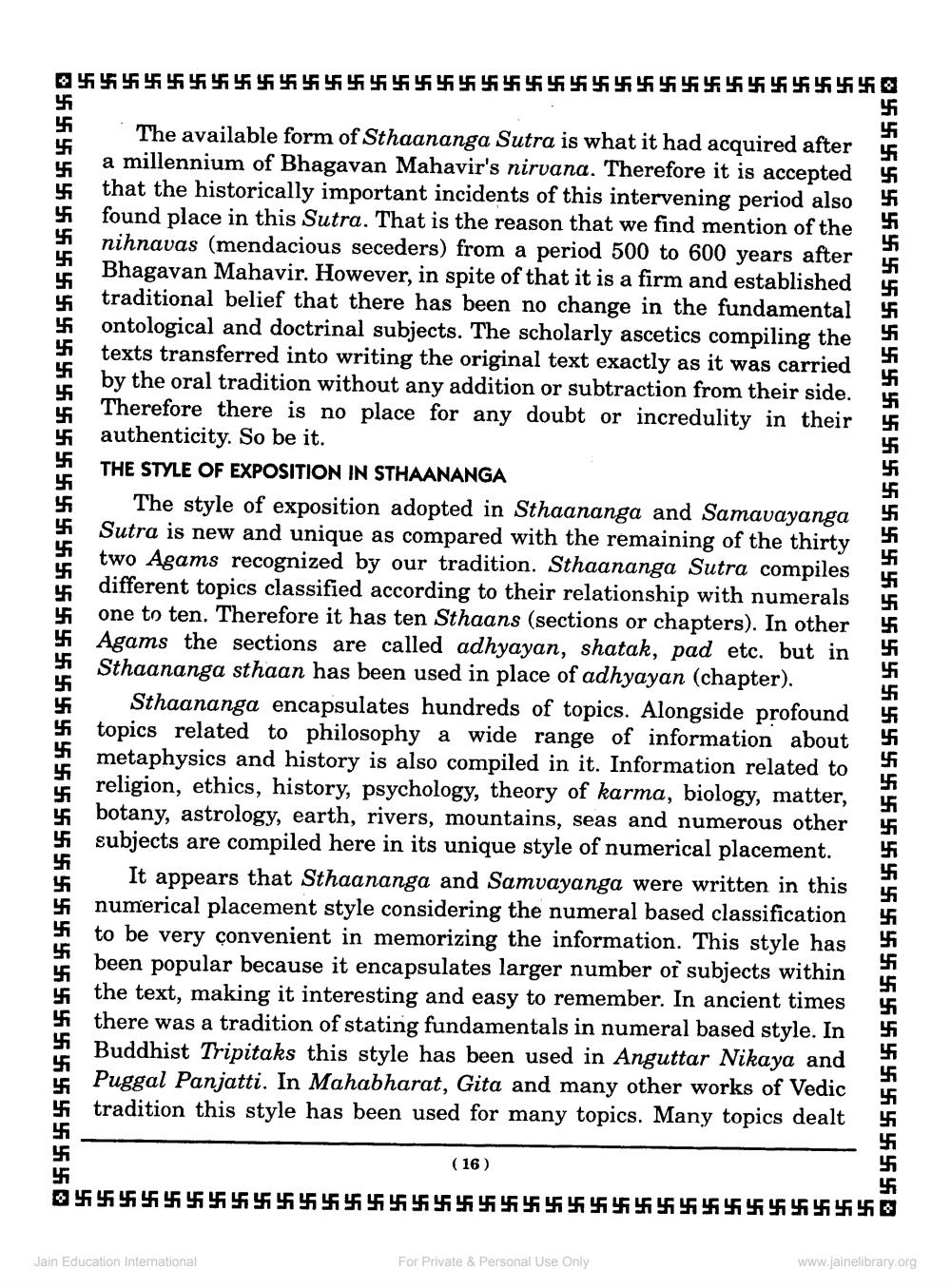________________
44 41 41 41 41 41 41 41 41 41 41 41 41 414 415 4141414141414141414141414141414141
45 46 45 44 445 446 447 44
46 456 457 45454545454542
414 415 414 455 456 457 45454545455 456 457 4554 444 445 446 44 45 46 45 44
The available form of Sthaananga Sutra is what it had acquired after a millennium of Bhagavan Mahavir's nirvana. Therefore it is accepted that the historically important incidents of this intervening period also found place in this Sutra. That is the reason that we find mention of the nihnavas (mendacious seceders) from a period 500 to 600 years after Bhagavan Mahavir. However, in spite of that it is a firm and established traditional belief that there has been no change in the fundamental ontological and doctrinal subjects. The scholarly ascetics compiling the texts transferred into writing the original text exactly as it was carried by the oral tradition without any addition or subtraction from their side. Therefore there is no place for any doubt or incredulity in their authenticity. So be it. THE STYLE OF EXPOSITION IN STHAANANGA
The style of exposition adopted in Sthaananga and Samavayanga Sutra is new and unique as compared with the remaining of the thirty two Agams recognized by our tradition. Sthaananga Sutra compiles different topics classified according to their relationship with numerals one to ten. Therefore it has ten Sthaans (sections or chapters). In other Agams the sections are called adhyayan, shatak, pad etc. but in Sthaananga sthaan has been used in place of adhyayan (chapter).
Sthaananga encapsulates hundreds of topics. Alongside profound topics related to philosophy a wide range of information about metaphysics and history is also compiled in it. Information related to religion, ethics, history, psychology, theory of karma, biology, matter, botany, astrology, earth, rivers, mountains, seas and numerous other subjects are compiled here in its unique style of numerical placement.
It appears that Sthaananga and Samvayanga were written in this numerical placement style considering the numeral based classification to be very convenient in memorizing the information. This style has been popular because it encapsulates larger number of subjects within the text, making it interesting and easy to remember. In ancient times there was a tradition of stating fundamentals in numeral based style. In Buddhist Tripitaks this style has been used in Anguttar Nikaya and Puggal Panjatti. In Mahabharat, Gita and many other works of Vedic tradition this style has been used for many topics. Many topics dealt
454 455 454 455 456 455 456 457 44 45 46 45 44 45 46 47 46 45 46 4
45454545454545454 455 456 457 451
( 16 )
4545454 455 456 457 456 457 45414141414141414141414141414141451454545454545454545
For Private & Personal Use Only
Jain Education International
www.jainelibrary.org




